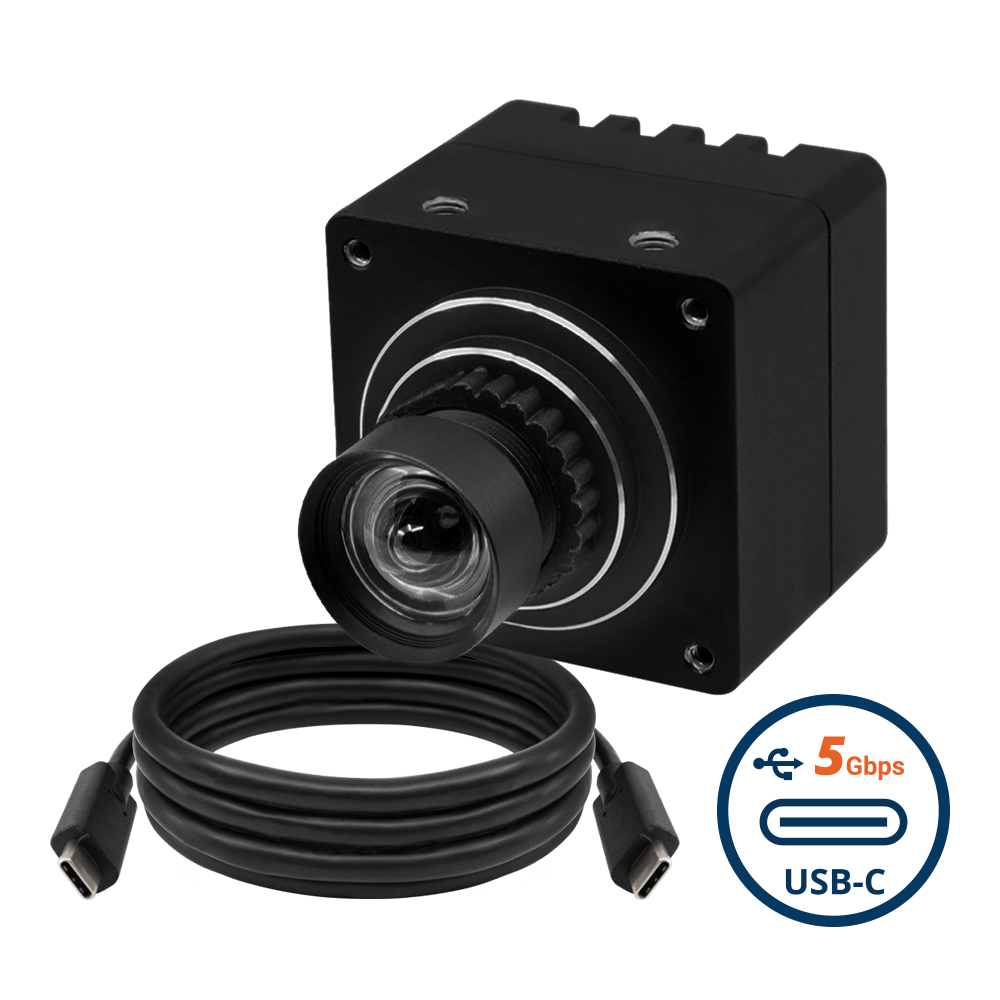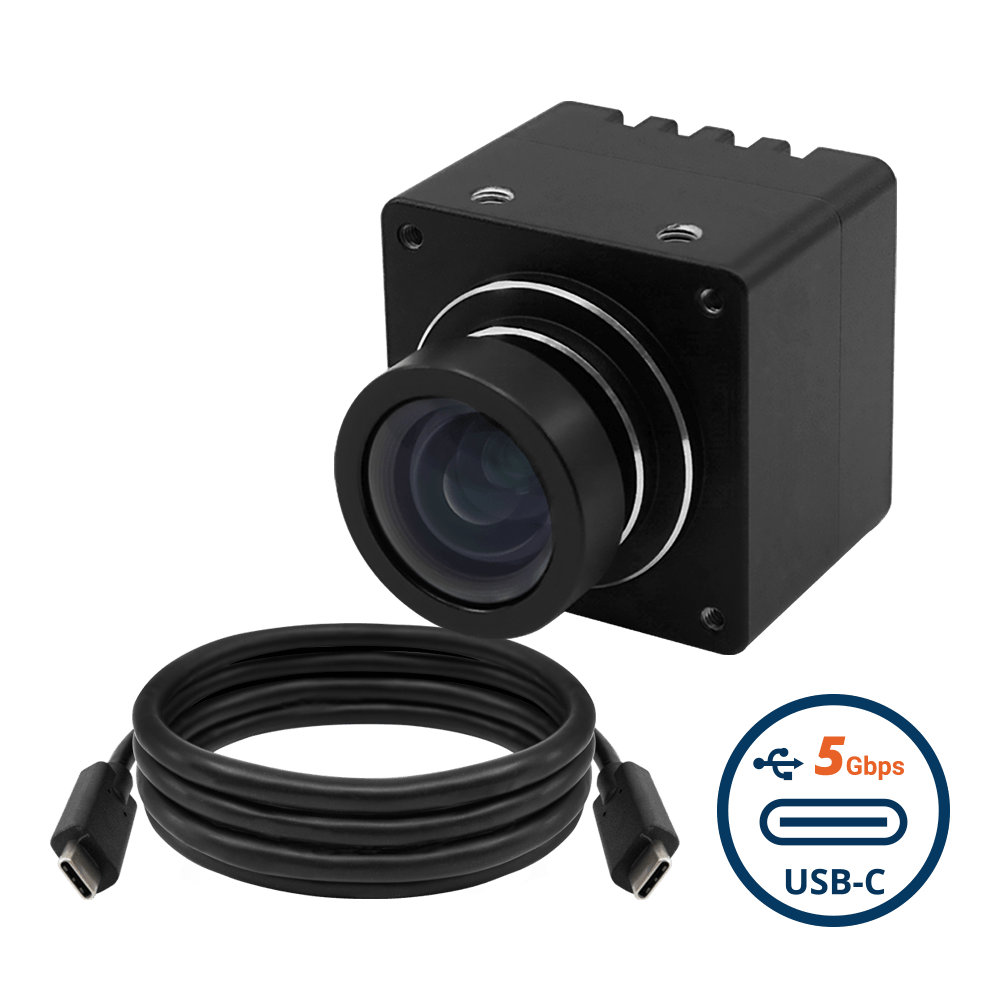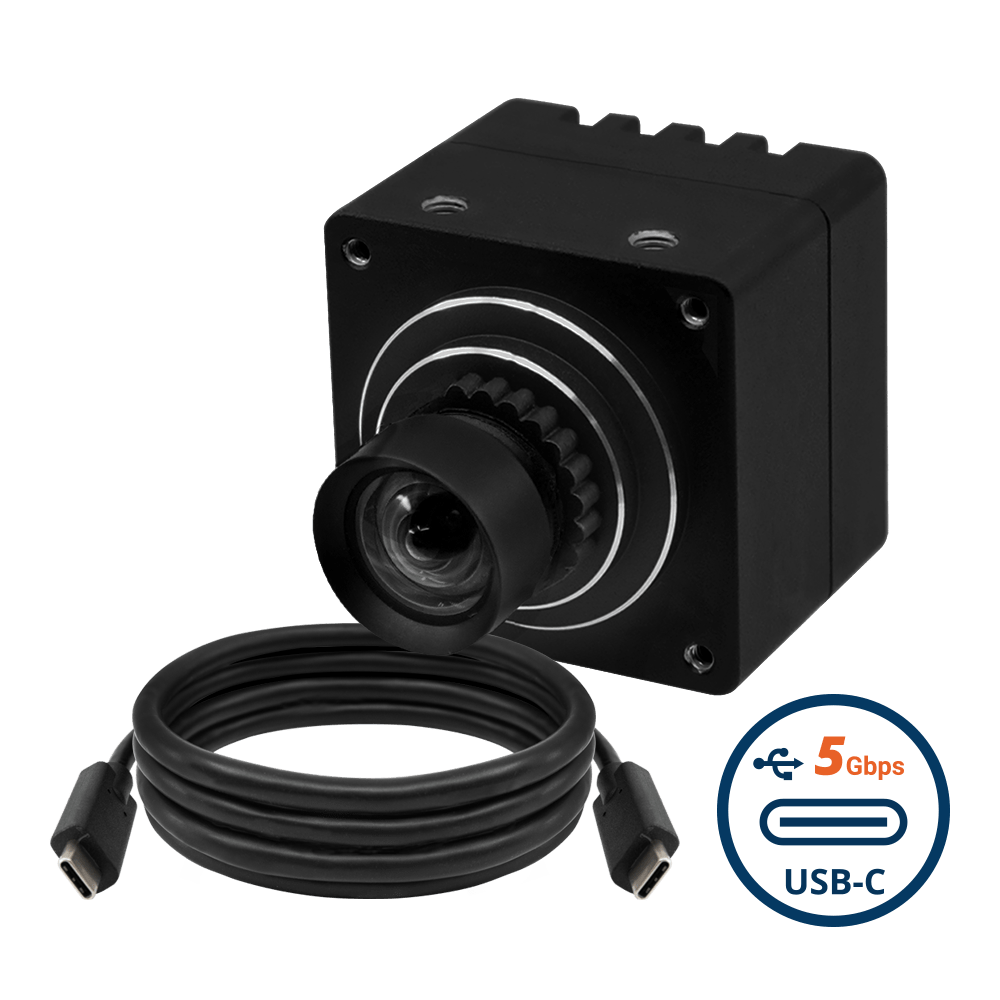Imagine you’re in the middle of a critical team meeting with several participants on both sides. As discussions heat up, the camera stubbornly stays fixed in one spot, missing the dynamic exchanges and key contributors. Some team members are barely visible. Others are completely out of frame. This static setup often leaves participants feeling disconnected and disengaged.
Though video conferencing has evolved over the years, many systems still rely on these outdated camera setups. However, the introduction of AI-powered smart cameras with auto-framing technology is set to revolutionize the experience.
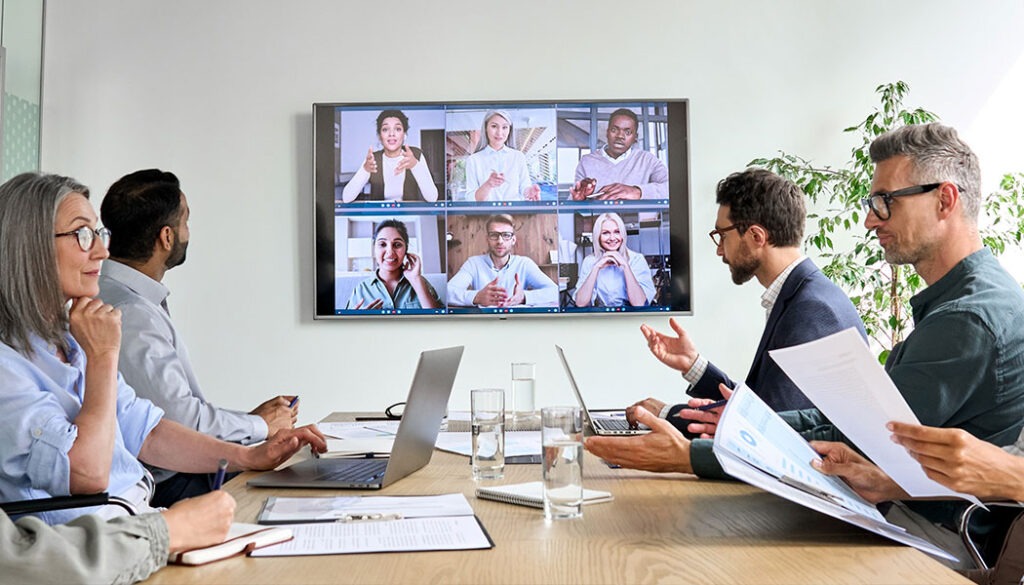
These advanced systems automatically adjust their focus to keep all participants in view, ensuring a more cohesive and engaging meeting. With auto-framing, every voice is heard and every face is seen. This capability is transforming video conferencing into a truly interactive and immersive experience.
What Is Auto-framing?
Auto-framing is a feature in modern smart cameras that automatically adjusts the view to keep everyone in the frame during video calls. Traditional cameras remain fixed on a specific area. But, auto-framing cameras use advanced technology, often backed by AI, to track participants’ movements. As a result, the camera can smoothly zoom in, zoom out, or pan to include everyone – whether seated, standing, or moving around.
In professional settings where multiple people are involved, this feature is particularly useful. The camera instinctively recognizes the active speaker or adjusts as the conversation shifts. This makes the video conferencing experience feel more natural and less rigid. Auto-framing, by taking care of camera adjustments, allows participants to focus on the discussion, without worrying about who’s in the shot.

A modern video conferencing room
Auto-framing is slowly becoming a standard in smart cameras. It is finding increased adoption in a variety of settings – from educational setups to telehealth services. This growing trend underscores the demand for communication tools that enhance remote interactions and foster better engagement.
How Does Auto-framing Work?
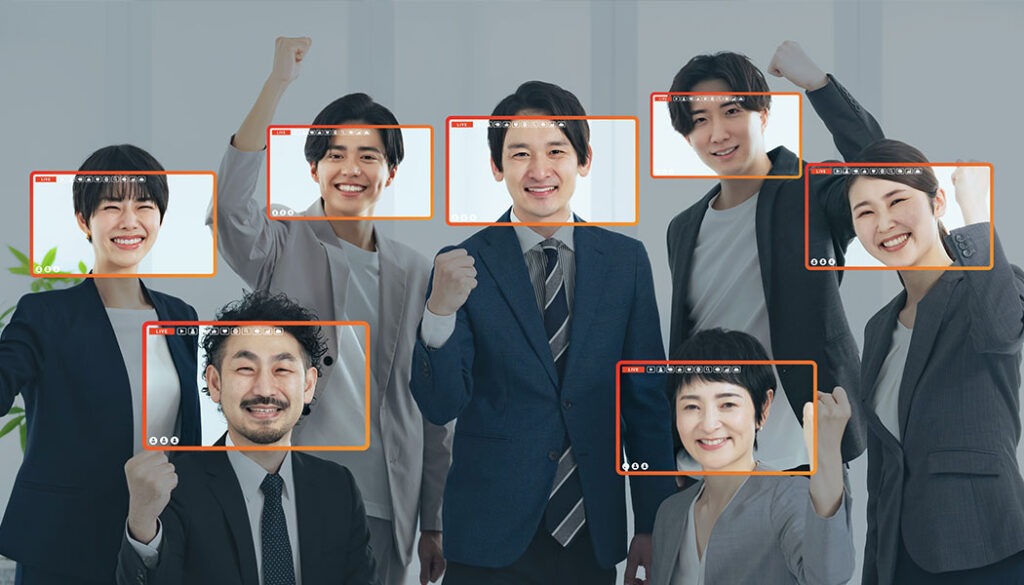
Identification of people using facial recognition
Auto-framing utilizes advanced algorithms and artificial intelligence to enhance video conferencing experiences. It begins with the camera detecting and identifying participants within its field of view.
Throughout the meeting, the AI algorithm, using facial recognition and movement tracking, looks for key indicators such as who is speaking or moving. It then adjusts the camera’s zoom, pan, and tilt functions (some setups also use rotating stands for an added degree of auto-framing) in real-time to keep everyone in the frame.
If a participant shifts position or a new person joins the meeting, the camera recalibrates automatically. This dynamic adjustment process ensures that the focus remains on active participants.
What Are the Key Benefits of Auto-framing?
Let’s take a closer look at how auto-framing is transforming video conferencing by enhancing focus, collaboration, efficiency, and overall user experience.
Improved Video Quality
Auto-framing ensures that the camera is always focused on the participants, regardless of their movements. This dynamic adjustment maintains optimal image composition and clarity throughout the meeting.
When participants shift their positions or change their focus, the camera automatically zooms in or pans to keep them in sharp focus. This results in a more polished and professional appearance. It ultimately reduces the chances of blurry or poorly framed shots that can detract from the quality of the meeting.
For example, during a corporate presentation, auto-framing maintains high video quality by keeping both the presenter and their materials clearly visible. If the presenter moves closer to a whiteboard or adjusts their position, the camera automatically adjusts. This ensures that all visual elements remain sharp and in focus.
Reduced Distractions
Auto-framing effectively manages distractions by concentrating on key participants and minimizing irrelevant background activity. When an unexpected interruption occurs, the camera swiftly adjusts to ensure the main speaker remains in view.
For instance, if a colleague’s child unexpectedly enters the video frame or a pet starts to wander around, auto-framing will quickly realign the camera. It will instantly focus on the primary speaker or active participants.
This dynamic adjustment helps maintain a clear and engaging communication experience by filtering out these distractions. This leads to the conversation remaining the central focus and the meeting continues smoothly without interruptions.
Enhanced Focus and Engagement
One of the most compelling benefits of auto-framing is its ability to keep the conversation dynamic by maintaining focus on the active speaker. As mentioned earlier, traditional cameras often leave participants on the fringes of the screen or out of view altogether.
Auto-framing, however, ensures that the camera continuously adjusts to highlight whoever is speaking. For instance, in a team meeting, as different people take turns presenting, the camera will automatically zoom in on each speaker.
This continuous adjustment not only enhances the visual engagement but also ensures that every participant is given their due attention. It, ultimately, helps foster better understanding and interaction among participants.
Seamless Collaboration
Auto-framing significantly enhances collaboration, particularly in environments where multiple participants need to share ideas and work together. The camera’s ability to follow the conversation flow ensures that every contributor is visible and heard. This creates an inclusive environment where no one feels left out.
For example, in a remote learning setting, an auto-framing camera ensures that each student’s contributions are visible during virtual class discussions. As students speak, the camera automatically adjusts its focus to include them in the frame. This capability ensures that every student’s participation is recognized.
Moreover, in collaborative workspaces, teams often move around or use different presentation tools. Auto-framing ensures that the camera adapts seamlessly. Whether someone is writing on a whiteboard or using physical props, the camera follows these actions. This ensures that remote participants don’t miss out on any important details.
No Manual Adjustments
Auto-framing eliminates the need for manual camera adjustments. This helps streamline the video conferencing experience. Traditional cameras often require operators to manually zoom or reposition the camera to keep participants in view. This can be cumbersome and disruptive, especially in dynamic or fast-paced meetings.
With auto-framing, the camera automatically handles these adjustments. This allows the participants to focus on the meeting rather than on camera controls. As participants move or shift their focus, the camera adapts in real-time. This seamless operation ensures that everyone remains in the frame without any manual intervention.
For instance, in a team brainstorming session, auto-framing ensures that all team members are visible as they contribute ideas – even if they move around the room or switch places. The camera adjusts automatically to keep everyone in view, allowing for a more fluid and uninterrupted discussion.

A team discussion over video conferencing
Cost-effectiveness and Ease of Use
Lastly, auto-framing offers cost-effectiveness and ease of use. This is valuable for organizations aiming to improve video conferencing without investing in complex systems. It reduces the need for additional equipment or personnel to manage video calls and hence leads to long-term cost savings.
For example, a small to medium-sized enterprise (SME) looking to improve its video conferencing setup can benefit from auto-framing cameras. Their plug-and-play nature allows teams to start using them immediately, with minimal setup time and effort.
Limitations of Auto-framing
While auto-framing offers numerous benefits, it is not without its limitations. These include:
Limited Effectiveness in Low Light Conditions
Auto-framing cameras rely on visual cues to track participants and adjust framing. In low-light environments, the camera’s ability to accurately detect and follow movement can be compromised. Poor lighting can lead to reduced visibility and difficulty in distinguishing participants, which may affect the camera’s performance.
Solution: To address this, choose cameras with advanced low-light capabilities.
Challenges with Fast-moving Subjects
Auto-framing is designed to adapt to changes in participant positions, but it may struggle with rapidly moving subjects. In fast-paced environments, such as dynamic presentations or active discussions, the camera might lag in adjusting its focus or fail to keep up with quick movements.
Solution: For environments with frequent movement, consider using cameras with a global shutter, processing speeds and advanced tracking algorithms.
Further Reading: Global Shutter vs. Rolling Shutter in Embedded Vision
Privacy Concerns
Auto-framing continually monitors and adjusts based on participant movements. This constant surveillance can raise privacy concerns among users who may feel uneasy about being constantly observed.
Solution: Communicate clearly with participants about the camera’s capabilities and the purpose of its features. Implement privacy controls, such as data anonymization and user consent protocols.
TechNexion: Embedded Camera Solutions For Auto-framing Applications
TechNexion offers a diverse range of embedded camera solutions designed to enhance auto-framing applications. The cameras, with USB C, MIPI-CSI 2, FPD-Link III and GMSL2 interfaces, deliver high-resolution imagery and seamless integration with a variety of systems. Plus, high frame rate capabilities, advanced low-light performance, and wide-angle lenses ensure optimal clarity and coverage.
Built with durability and versatility in mind, TechNexion’s cameras are perfect for a wide range of auto-framing setups – from telehealth to enterprise usage. To learn more about how our cameras can elevate your auto-framing project, contact us for a detailed consultation.
Related Products
Get a Quote
Fill out the details below and one of our representatives will contact you shortly.

